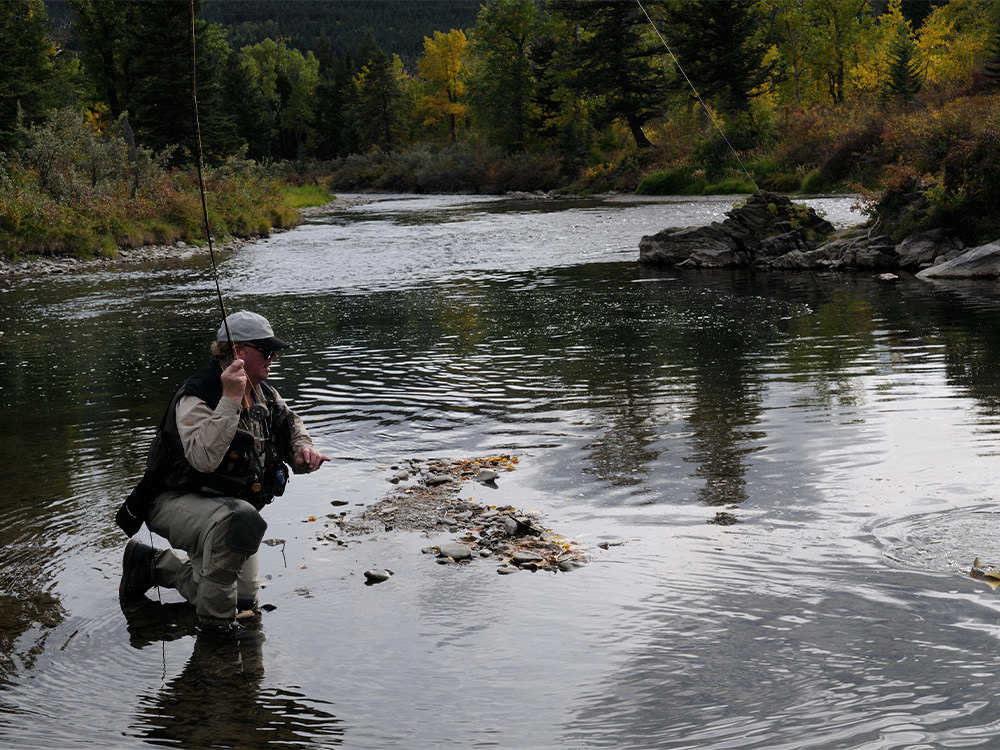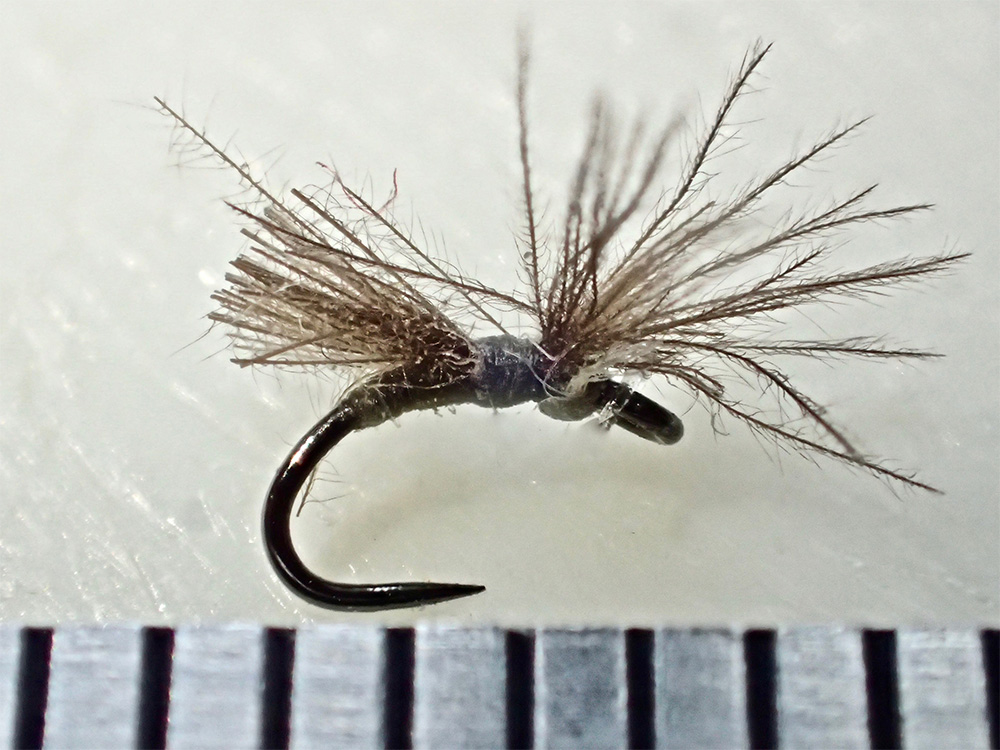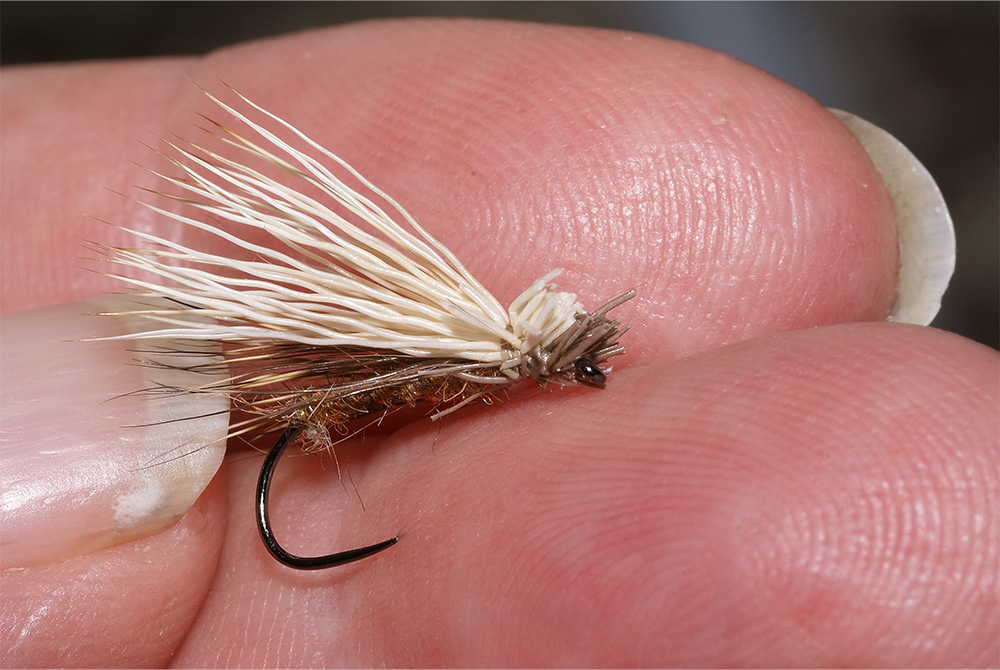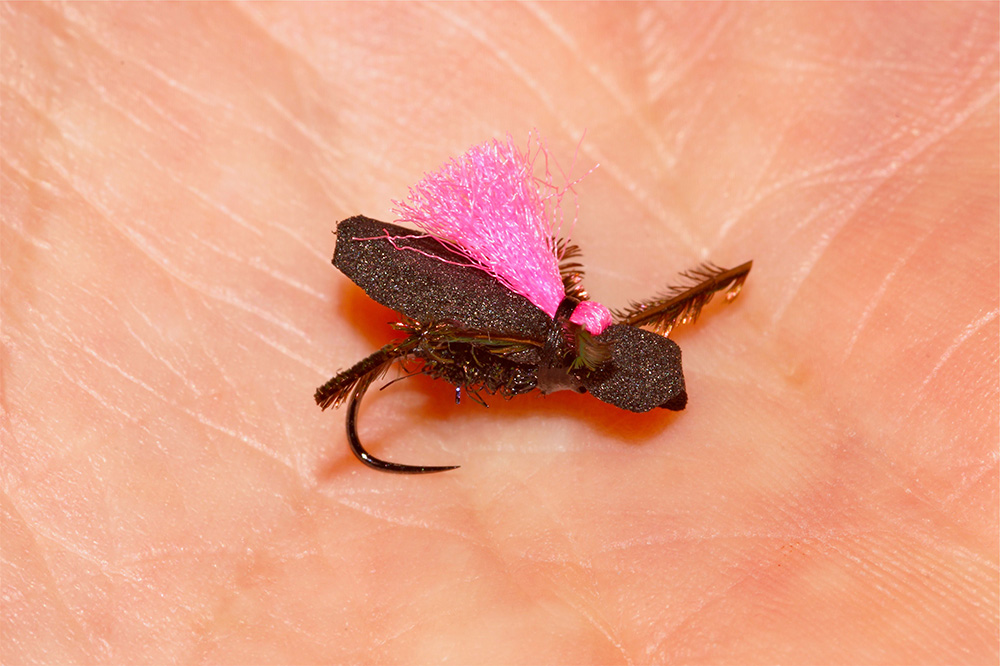Once in position to cast to a fish, it’s important that the fly is the correct one. Here, Dave Southall gives us the 10 best river patterns to exploit most situations
Flies need to be designed in such a way that they satisfy a range of criteria.
In most cases, they need to have the correct trigger features to convince the fish that they are food. For anglers like myself who prefer imitative patterns, their design needs to embody the essence of the organism that they are imitating.
The common secret to the 10 best river patterns
I am a disciple of the late Richard Walker who believed that a good caricature is more recognisable than a poor portrait. Naturalists and students of animal behaviour have shown that many organisms show an increased response to exaggerated features (super-normal stimuli).
For example, a nesting hedge sparrow will concentrate all its efforts into feeding a cuckoo chick with its extra-big yellow-edged beak, rather than feeding its own chicks. Scientists have also recognised a phenomenon known as ‘oddity selection’ in which predators positively select prey that looks or behaves a bit differently from the norm, such that they stand out from the crowd.
A classic example is when Gammarus/shrimps are infected with the Acanthocephalan (spiny-headed) worm, Pomphorhynchus laevis.
This parasite accumulates carotenoids that naturally occur in the shrimp’s body producing a bright orange spot. In addition it upsets the hormone balance in infected shrimps making them diurnal rather than nocturnal i.e. they are active during the day, rather than at night, making them far more likely to be predated upon.
Bearing these trigger factors in mind, I therefore try to make my flies as simple as possible, paring them down to what I consider to be the vital trigger, or triggers, by which I believe that the fish identify them as food. I believe that the key trigger features are basic shape, size and in some cases colour.

Gammarus infected with Pomphorhynchus laevis, which appears as a distinct orange spot, which fish recognise.
Engineering the 10 best river patterns
Our flies also need to be engineered so that they can be presented correctly. Dry flies need to float correctly on – or in most cases in – the surface film.
Sub-surface flies need to sink to the required depth and many need to be so constructed that they are relatively snag-free when being fished along the river or lake-bed or when being pulled through weed-beds; jig hooks, appropriately placed weight, or weed-guards can help with this. Flies that are to be manipulated, such as streamers, need to be balanced so that they move in an appropriate manner.
Aerodynamics
Flies also need to be sufficiently aerodynamic that they are reasonably easy to cast and, particularly in the case of dry flies, that they do not spin during flight. I’ve seen some big Mayfly patterns with huge feather wings that spin like propellers, twisting even thick tippet into a bird’s nest tangle.
Visibility
Another very important feature of dry flies, and if possible sight-fished sub-surface flies, is that they should be easy for the angler to see. If at all possible they should be simple to tie. No one wants to risk loosing a fly in an over-hanging tree if it has taken half an hour to tie, yet it is deep under that tree that is the most likely spot to catch a fish.
Durability
Lastly, in my opinion, they should be durable. I know one fly tyer who says that he is quite happy if his fly will only catch a single fish before it is damaged, but I want mine to catch at least 20 fish and preferably more. So I tie using Superglue, UV-cure resin, wire or thread ribbing, I wind thread through collar hackles, use double whip-finishes, and use durable materials, like CdC.
Choice of material
Choice of materials and where and how they are incorporated into the fly are very important, for example some deer hair is hollow and therefore buoyant, and CdC has an incredibly large surface area due to the tiny barbules, whilst the amount and location of tungsten beads and lead wire can determine not only how fast a fly sinks, but at what angle it sinks and how it behaves when retrieved.
Fly 1: Minimalistic Micro Midge (MMM)
Hook: Gamakatsu C12 BM, size 26–30.
Thread: Tan 8/0 (waxed).
Wing: Tip of a mallard CdC feather, pointing over the hook eye and the butt cut to leave a short rear wing/body.
Note: This is just the tip of a CdC feather tied onto the shank of a tiny hook.
It is incredibly effective when trout and grayling are preoccupied with tiny midges and aphids. Size can be critical and I’ve had fussy fish repeatedly refuse size 26s, but confidently take size 30s. They are simple to tie (with a magnifying lamp) and virtually indestructible. The CdC with its large surface area floats the fly amazingly well when treated with a very thin coat of Roman Moser Miracle Float (if I want the fly to be dark coloured and visible on a light background) or white Fumed Silica Powder (if I want the fly to show up against a dark background).
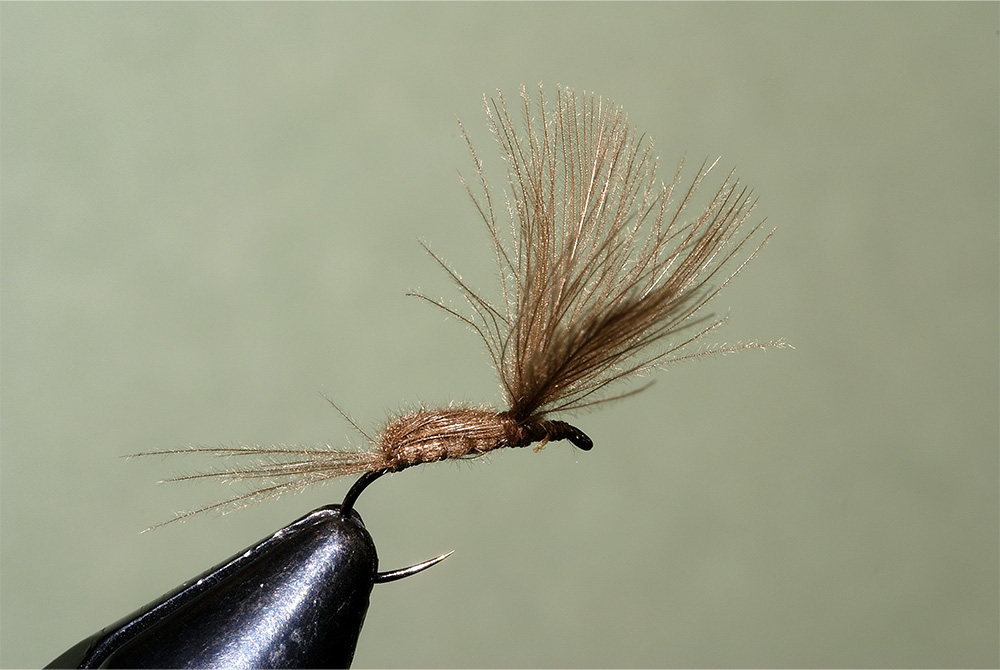
Fly 2: Jack Tucker’s IOBO Humpy
Hook: Dry fly, size 12–24.
Thread: Yellow or tan 8/0.
Tails/back & wings: 2 natural mallard CdC feathers.
I know that I’ve mentioned this fly several times in my articles, but it really is what its name (It Oughta Be Outlawed Humpy) implies. If I was ever restricted to just one dry fly this would be my choice. It is simple to tie, floats, and is incredibly effective when olive duns, midges, egg-laying stoneflies, caddis flies and a number of terrestrial insects are on the water. With the two wings splayed out it always lands correctly and the soft CdC wings never cause the fly to spin in flight.
The tying sequence that I use (very different from Jack’s original method) was featured in the March 2019 issue of Fly Fishing and Fly Tying.

Fly 3: Metal Micro Buzzer Pupa
Hook: Grub, size 18–30 (Gamakatsu C12 BM Midge hooks in sizes 26 to 30, Tiemco 2488 or similar).
Body/abdomen: 0.09mm diameter wire.
Rib: 0.09mm diameter wire.
Head/thorax: Black or brown 0.09mm wire on smaller sizes, or 1.5 mm & 2mm black tungsten beads for sizes 24mm and bigger.
Coat the wire with UV-cure resin for extra durability and to seal the loose ends.
This is another simple pattern that has the basic shape of a midge pupa and in this case sinks quickly to the required depth when fished under a dry fly or other support mechanism. It is very effective in rivers and stillwaters for both trout and grayling and is indestructible. Colour can occasionally be important when there is an abundance of a particular colour of Chironomid midge pupae.
If tying it as a nymph I tie in a tail of a few strands of CdC clipped to length.
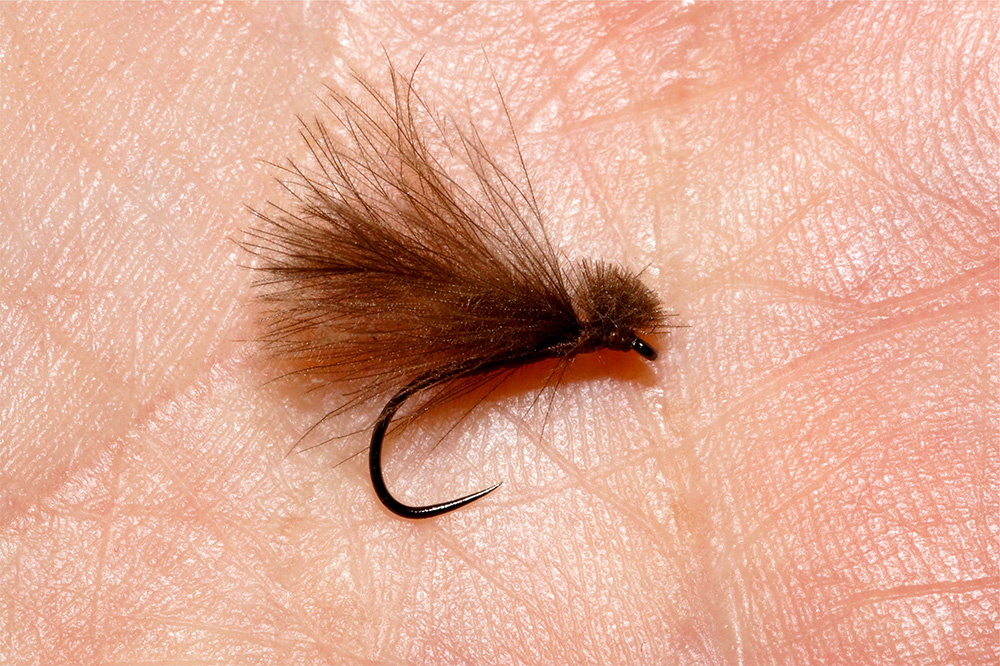
Fly 4: Marjan Fratnik’s F Fly
Hook: Dry fly, size 10–20.
Thread: Brown or tan 8/0.
Body: Thread.
Wing & head: 3 or 4 natural mallard CdC feather tips.
Another simple, durable fly that floats well when treated as with the MMM and with the basic triangular profile of an adult caddis fly, stonefly or moth. A couple of horizontal thread turns between the wing and hook lock the CdC in so that it will never pull free. If I need a similar fly that is more visible against a dark background or that has a bit more weight to cast against the wind I use a basic Hackleless Elk Hair Caddis (see next).
Fly 5: Hackleless Elk Hair Caddis
Hook: Dry Fly, size 12–20.
Thread: Tan 8/0 or 6/0 (6/0 is less likely to cut through the elk hair).
Body: Dubbed hare’s mask or squirrel.
Under-wing: Brown deer hair.
Over-wing: Bleached elk hair.
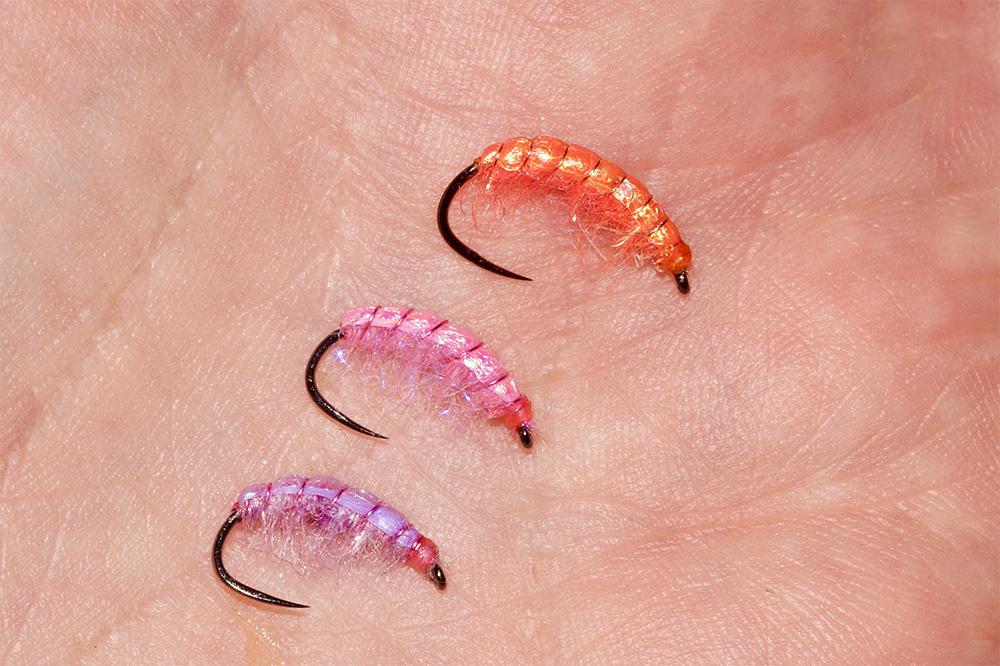
Fly 6: Orange, Pink or Purple Shrimp
Hook: Grub, size 8–18.
Thread: Tan 8/0 or, if fussy, to match the fly.
Under-body: 1 or 2 layers of lead wire.
Body: Any suitable dubbing with a bit of sparkle and some spiky bits with fibres pulled out underneath to look like legs.
Back: Clear Scudback, or similar colour to the body.
Rib: Fine copper wire, or similar colour to the body.
These have a basic shrimp shape. By varying the size of hook and amount of lead under-body the sink-rate can be varied. The slim profile facilitates fast sinking. Their bright colour exploits ‘oddity selection’, and in addition, makes them easy to see when sight-fishing. They are also very durable.
Fly 7: Flip Flop Scarab Noire
Hook: Fine wire dry fly, size 10–18.
Thread: Black 8/0.
Under-body: Peacock Glister dubbing on rear half of the hook-shank.
Over-body: 2mm black sealed cell-foam cut to shape.
Legs: 2 single knotted strands of peacock herl.
Sighter: Pink Poly yarn.
Build a good thread base and apply Superglue under where the foam is tied in to stop the body twisting around the hook-shank. The key trigger is undoubtedly the body shape and this works very well even without the legs. It is simple to tie, very buoyant if the balance between foam body and hook weight is correct, and it is fairly durable.
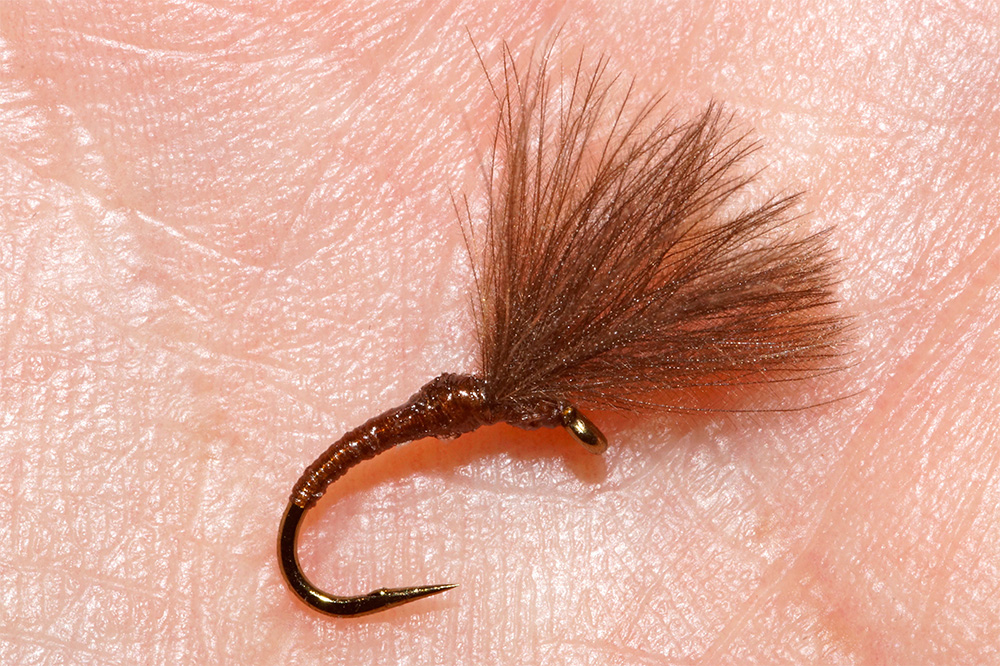
Fly 8: Shuttlecock
Hook: Grub, size 12–24 (mainly sizes 20 and 18).
Thread: Tan 8/0.
Body & thorax: Thread coated with UV-cure resin or Superglue.
Wing: 3 CdC feather tips.
This is a very simple, durable midge or upwing emerger pattern. For aesthetic reasons I often tie this with a yellow stripped quill abdomen coated with UV-cure resin and hare’s ear thorax, but the simple thread version works just as well. The resin or Superglue-coated body ensures that this part sinks instantly, both giving an apparently vulnerable food item for the fish and anchoring the fly into the surface, which helps to reduce micro-drag. The vertical CdC wing provides floatability and good visibility. Pink dyed CdC can be used on smaller versions if visibility is a problem.
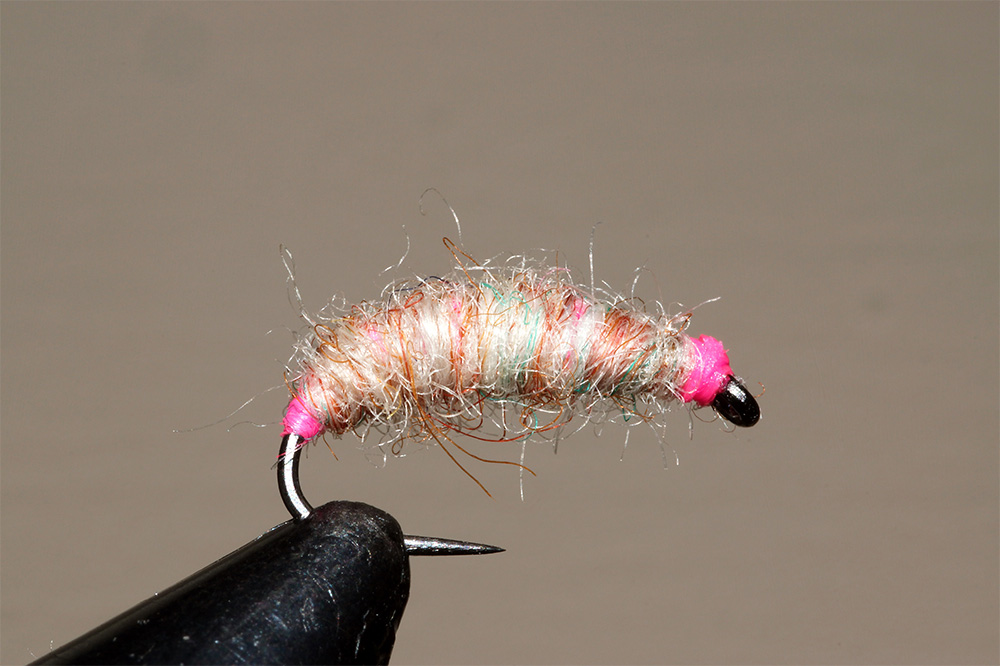
Fly 9: Utah Killer Bug (variant)
Hook: Grub, size 10–18.
Under-body: Lead wire.
Thread: Glo-brite pink or orange floss (covering the lead under-body).
Over-body: Jamieson’s Shetland Spindrift wool (Oyster colour or other suitable colours).
This very simple fly resembles a number of possible aquatic invertebrates including shrimps, Tipulid/cranefly larvae, some beetle larvae and some leeches. The bright floss exploits the ‘oddity selection’ phenomenon and, when wet, the thread colour glows through the wool. Some of my biggest grayling, several over 3lb, have succumbed to this fly, particularly the orange version.
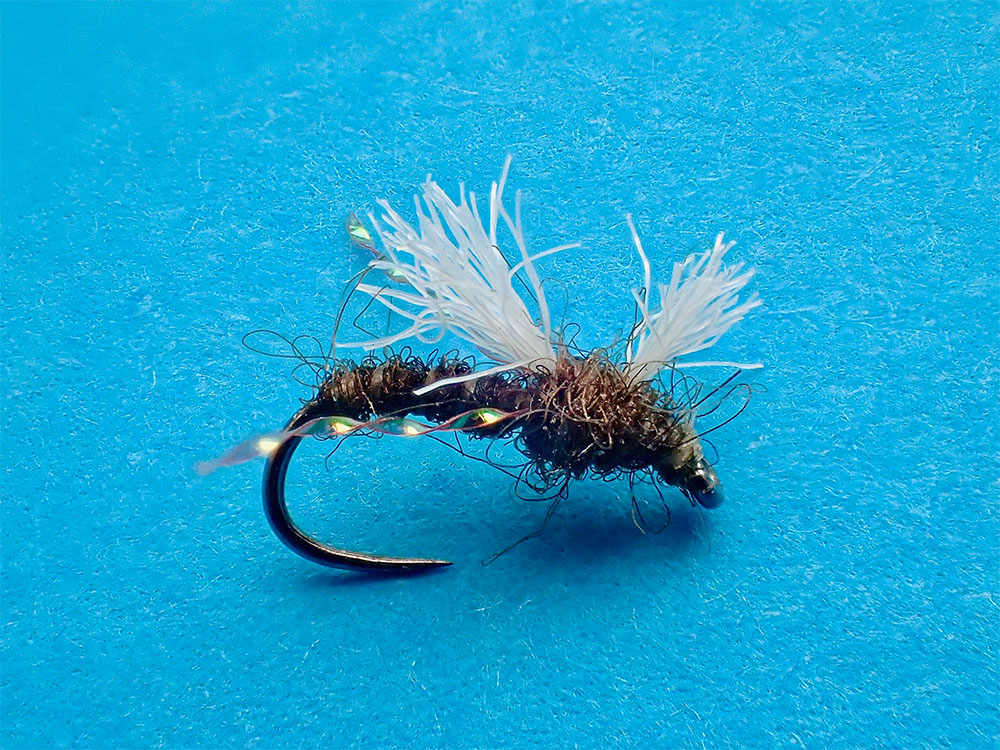
Fly 10: Stuart Crofts’ Agapetus Pupa
Hook: Dry fly, size 20.
Thread: Tan 8/0.
Body: Brown or a mix of brown and orange fine poly dubbing (colour depends on the species being imitated).
Legs: Brown Crystalflash or a single cock pheasant tail fibre angled backwards
Posts: White poly yarn.
Stuart Crofts is a master of fly design and this pattern is an absolute essential on waters where Agapetus caddis are abundant. The pupae (strictly speaking they are pharate adults) swim to the bank where they transpose into adults. The legs act as outriggers ensuring the fly fishes correctly and the double post, which is the only part that should have floatant applied, holds the fly horizontally in the surface film and acts as a sighter. Wet the body before applying floatant so that the body sits in the surface. Fish dead-drift with frequent twitches. Stuart also ties a version without the posts and with a 1.5mm black tungsten bead to imitate the pupa as it swims to the surface.
Whilst I am in awe of the realistic masterpieces that some fly tyers produce, for me the real art of fly tying is portraying the essence of the organism that is being imitated and, if possible, enhancing it by exaggerating some of the features to make the fish select it from the naturals which can at times be so abundant that the chance of a fish taking our fly might seem to be infinitesimally small.
It is worth having a go with some of your favourite patterns: see if you can simplify them without reducing their effectiveness, or even better, see if slight changes will make them even more effective.
See more great flies here.




